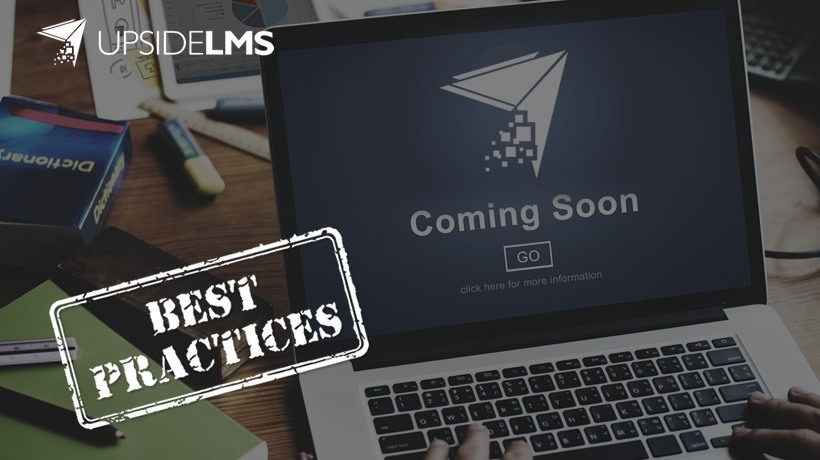How To Market A Learning Management System Internally
Developing eLearning or choosing the right LMS for an organization are no cakewalk! But of course, that is already established. What needs reiteration though is the fact that these painstakingly designed modules aimed at enhancing the learning needs of the employees will fall flat if they are not promoted and marketed well. The idea is that unless there is buzz about the new Learning Management System (LMS), chances are that LMS administrators are simply waiting for employees to login and partake of the product and its benefits. The sooner the company promotes and encourages adoption of the new system, the faster it can accelerate the Return On Investment (ROI) and enhance its business performance.
Without a thorough marketing, even employees who are obligated to participate in training and development will not feel motivated to do so. They need to understand the benefit of the training "for them". Besides, different sets of groups within an organization will leverage the LMS in varied ways. From users to managers to stakeholders, the learners need to be convinced about the ‘why’ and ‘how’ of the LMS for it to be truly successful. The most important cohort in the whole LMS promotion process is the 'learners'. Even before the content and the LMS is up, it is wise to let them know what it is all about and how they can gear up to take advantage of the learning opportunity to the fullest. After all, system adoption has a lot more to do with people factors and effective communication than just technology.
Here are a few steps to be considered to effectively market a Learning Management System internally for best results:
1. Putting Together A Marketing Team Internally To Promote The LMS
The first step is to identify members from the team who can actually take up the promotion aspect and manage the whole process. This team has to be a little eclectic considering it will require expertise on different aspects: from strategizing to execution. It’s best to include members from the Learning and Development, HR vertical, Marketing, and members from the IT department to offer advice and support in regards to implementing the marketing plan. The roles of each member have to be designed beforehand to avoid confusion later.
2. Identifying And Understanding The Target Audience
LMS users are generally segmented into categories. Broadly, these include: Learners, Administrators, Managers, Department Heads and Senior Management. Each of these user groups has different needs and require customized target messages based on those needs. When developing a marketing strategy, there should be an understanding of how implementing the new system will impact each user group so that the team can develop messaging that is impactful and relevant to their specific needs.
3. Defining Objectives
The next step is to define clearly what objectives the marketing strategy sets to meet. Learners will first require awareness about how the LMS is going to benefit them. This will be followed by actually encouraging usage of the product. So, the marketing strategy has to follow the dual objectives of creating awareness and encouraging usage.
4. Identifying Appropriate Channels Of Communication
Once it’s established that there is need to reach out to the learners and other stakeholders and influencers, the next part is to zero in on the channels of communication that are to be used to reach out to them. While there are many options available these days, it is important to consider what will work best for the organization. Implementing a multi-channel, multi-pronged approach is most efficacious in this case. There are various media (including formal as well as a tad informal) like emailers, posters, newsletters, intranet, screensavers, PC wallpapers, meetings, or even office parties. In the same process, the next step is to divide the entire activity into phases, preferably three – Pre-launch, Launch, and Post-launch. The phases span over a series of communication exercises to take the ‘audience’ from a state of ignorance, through interest (components of awareness), into engagement (motivation), and finally into a state of satisfaction or reward. It also helps here to ensure that the content is engaging and catchy.
5. Planning A Schedule And Deciding When To Start
By now, the key target audience has been identified, a marketing strategy has been put in place and a bunch of creative communication pieces have been put together to be sent out. The question now is "when is a good time to schedule the communications?". It’s important to highlight that earlier the communications begin, the better the user adoption rates are. Ideally, the marketing team may want to begin the promotion at least six months before the LMS launch, and then continue the internal promotional efforts until the roll out date. The focus here is to ensure that individuals get enough time to grow accustomed to the LMS’ features, and receive abundant time to get excited about the new learning platform.
6. Setting Up Training Sessions, Analyzing Results
Now that almost everything else is in place, it is imperative that the actual training sessions and workshops, support desks and support tools that educate the learners in terms of how the LMS works and the ways in which they can best extract learning from it. These should be planned for and made available to users at all times. Also, it’s good to draw reports from the LMS to see how users access the learning materials and analyze the overall results.
There, the marketing strategy is now pretty much in place and the next step is to actually test the waters and roll out that stellar product that is bound to be a game changer for the company. In the end, the paybacks of an LMS are amazing and every effort is worth it!









